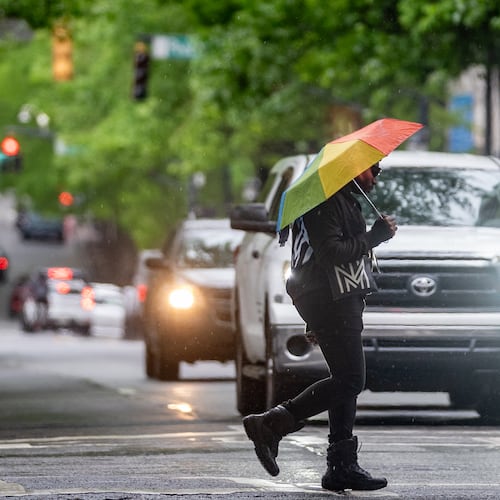Driving in Atlanta is enough of a nightmare when the weather is clear, but something about rainfall seems to bring out the worst in our neighbors behind the wheel. As heavy rain starts to hit the metro area, keep you and your fellow drivers safe by following a few simple tips.
Slow down
Sometimes, the most obvious advice is the most live-saving. According to AAA, one of the best ways to reduce your risk of hydroplaning in heavy rain is to reduce your speed. Oils on the road can make for slick conditions when mixed with precipitation, and even with half an inch of water on the roads, tires have to displace a gallon of water per second to keep the wheels moving.
Take your space
Leaving an extra few feet between your car and the vehicles in front of you can be the difference that makes a a safe drive home. According to the Telegraph, it can take twice as long to come to a stop when conditions are wet, so give yourself the room you need to drive defensively.
When it comes to floodwater, just turn around
According to the National Weather Service, it takes only 12 inches of moving water to carry away a small car. It can be hard to tell just how deep standing water is, too, so avoid large puddles and deep standing water on roadways and in parking lots. According to Progressive, deep waters also can stall your engine, leaving motorists stranded and in a bad situation if weather continues to worsen.
Credit: JOHN SPINK / AJC
Credit: JOHN SPINK / AJC
Keep a clean car and get regular checkups
Squinting your way through heavy rain and wind isn’t the time you want to realize that your windshield needs a heavy scrub, especially if the grime starts to affect your ability to see the road and other vehicles. Geico warns drivers to make sure to clean their cars thoroughly once a month, and be sure to get regular checkups to ensure the car engine, defrost and other functions are working correctly. It’s better to be too cautious than to end up without a crucial function in a crisis.
Turn your lights on
Turning on your headlights doesn’t just help you see where you’re going — it helps other motorists see you. Traffic laws in Georgia mandate that drivers use their lights when making trips 30 minutes after sunset, 30 minutes after sunrise, or in conditions with limited visibility (including rain). According to Travelers, turning your lights on can help you avoid even slight fender benders.
About the Author
The Latest
Featured

